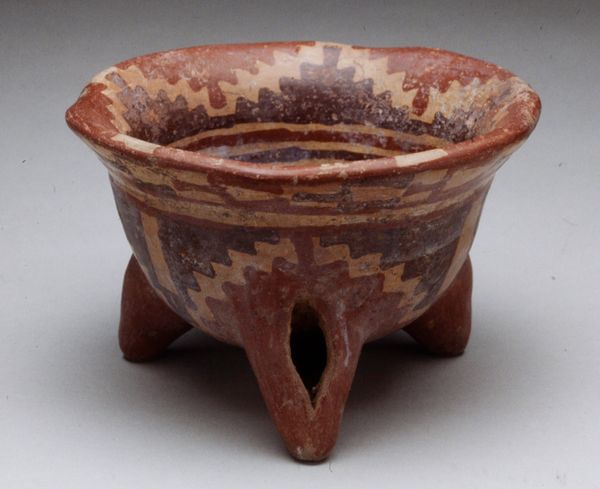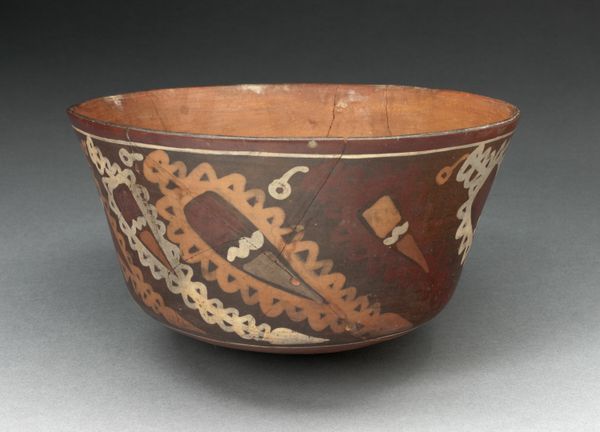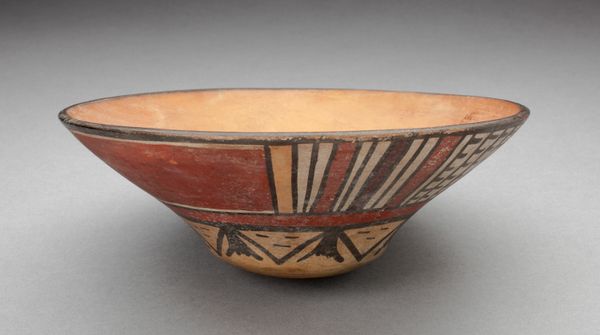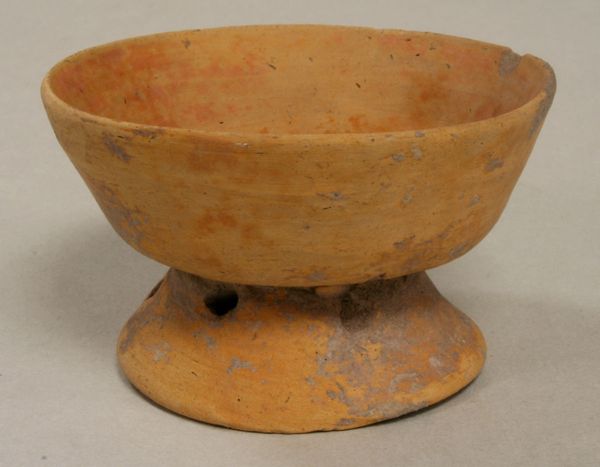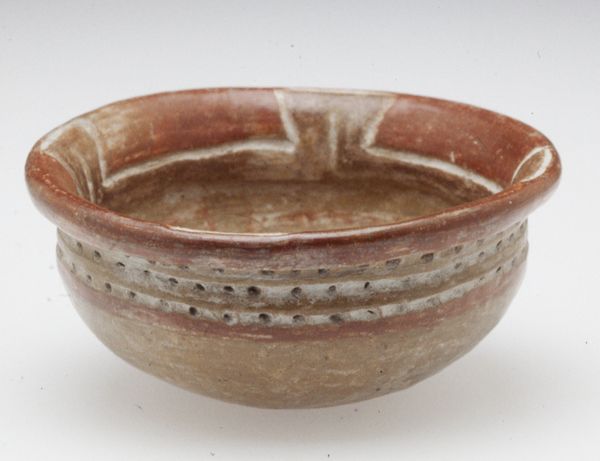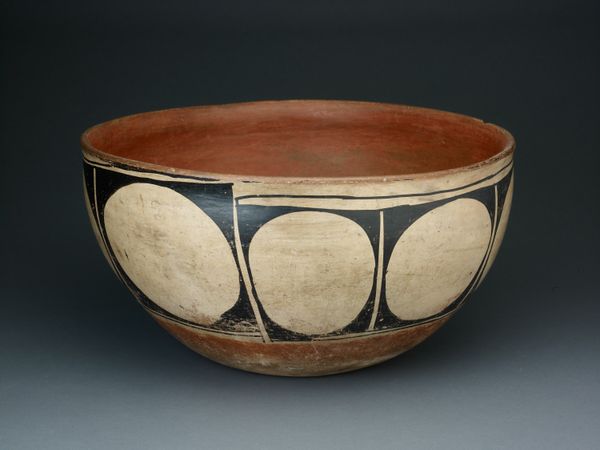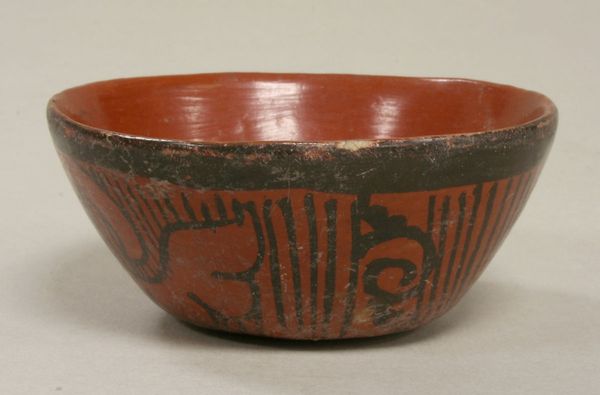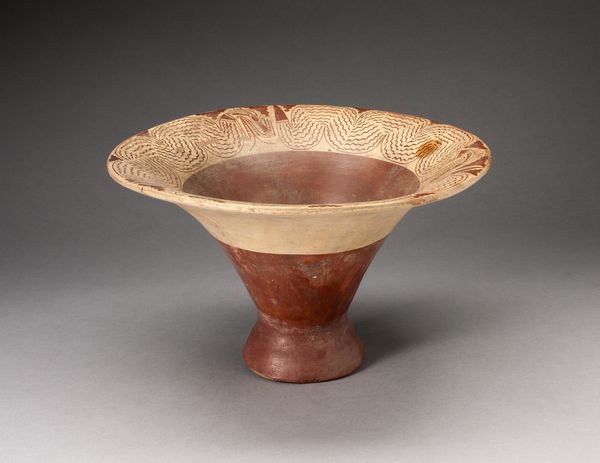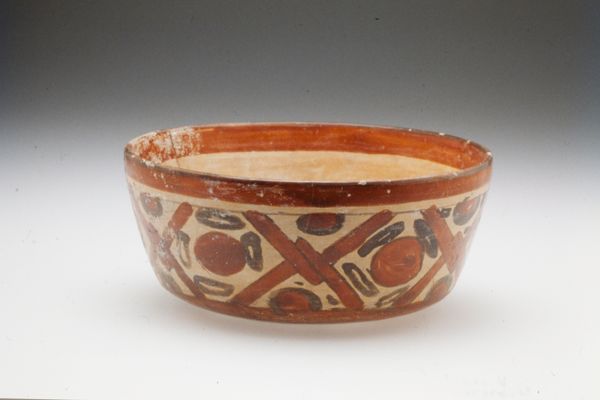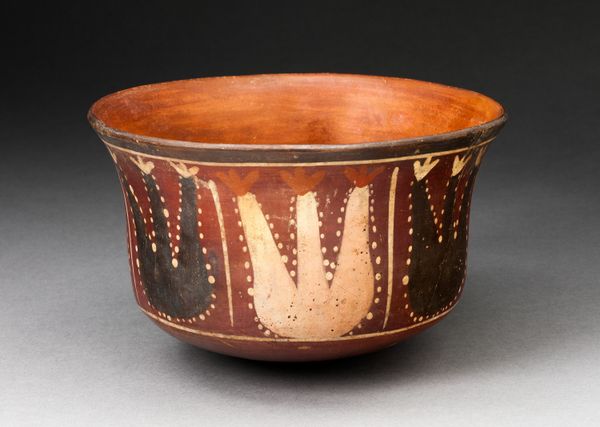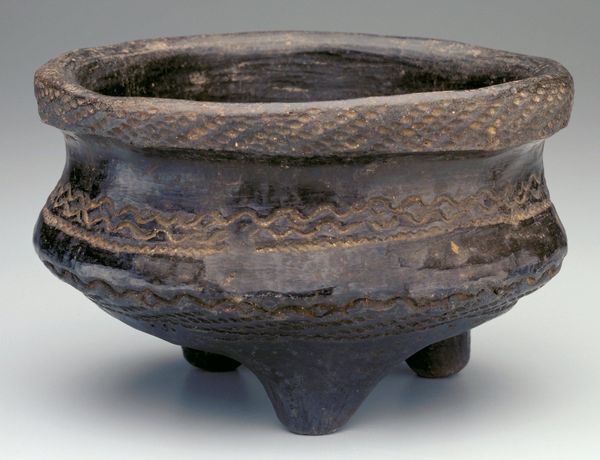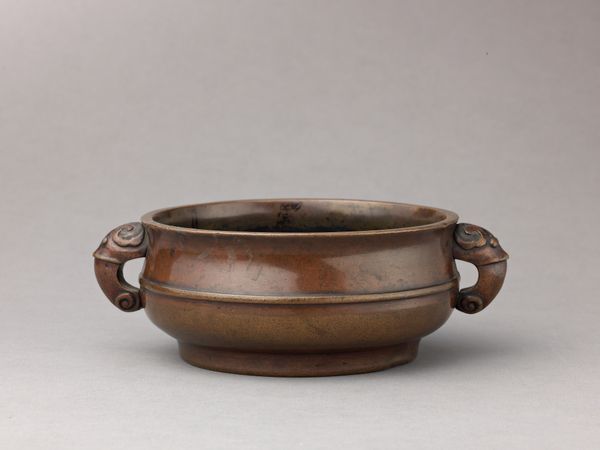
ceramic, terracotta
#
ceramic
#
terracotta
#
indigenous-americas
Copyright: Public domain
Curator: Standing before us is an artifact currently held in the Metropolitan Museum of Art’s collection: a small ceramic piece entitled "Miniature Tripod Vase," hailing from an ancient, but indeterminate, era. What catches your eye first? Editor: The sheer vulnerability of it. The earthy materials are so elemental. One wonders how it survived at all, much less intact enough to travel across centuries. You can feel the crafter’s hands, intimately, at every angle. Curator: It’s captivating, isn't it? Considering its likely origin in an Indigenous Americas culture, the vessel form itself carries immense symbolism. It served purposes ritualistic or daily. The tripartite design–the three legs supporting the bowl—could symbolize cosmological elements. Editor: Right, but let’s also consider the production process itself. Indigenous ceramics, at least according to my sources, usually rely on accessible natural resources. Locally sourced clays, pigments derived from minerals and plants – these tell a story about adaptation to place and specific technical knowledge within its community. What kind of access did people have, and what does that tell us about their consumption and culture? Curator: Precisely. And if this small vessel were indeed employed ritually, the color and shape choices made by its creator echo shared societal beliefs concerning renewal, stability, perhaps even connections between the terrestrial world and celestial realms. Red is powerful among countless communities. Editor: Thinking of ritual use, this must have been fired at relatively low temperatures, perhaps in an open pit kiln given how old it is. Imagine the entire village gathering to help collect the clay, to gather the firewood. Each mark reflects choices in the means of production within its context. Curator: Exactly, a dialogue of materials and imagination over long, layered histories. Seeing the hand that formed the legs to balance that round bowl transcends temporal separation and individual purpose. Editor: Right. For me it always comes back to how this object exists today – as a singular artifact within a major institutional collection that allows a brief interaction. The conditions of preservation, conservation, storage all are such interesting considerations of this single clay pot! Curator: A thought worth treasuring, seeing these forms reminds one of their continuity into later eras.
Comments
No comments
Be the first to comment and join the conversation on the ultimate creative platform.

